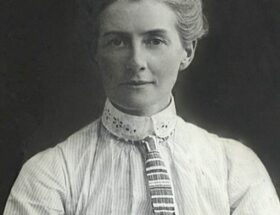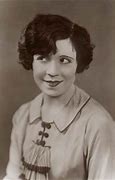
Early Life
Cesare Borgia was born in Subiaco on 13 September 1475 and was the illegitimate son of Cardinal Roderic Llançol i de Borja, later Pope Alexander VI, and his Italian mistress Vannozza dei Cattanei. The Borgia family originally came from the Kingdom of Valencia and rose to prominence during the mid-15th century.
Pope Alexander VI was the first pope who openly recognized his children born out of wedlock.
Church Office
Following school in Perugia and Pisa Cesare studied law at the Studium Urbis (nowadays Sapienza University of Rome). He was made Bishop of Pamplona at the age of 15 and archbishop of Valencia at 17.
In 1493 he had also been appointed bishop of both Castres and Elne. In 1494 he also received the title of abbot of the abbey of Saint-Michel-de-Cuxa. Along with his father’s elevation to Pope, Cesare was made Cardinal at the age of 18.
Alexander VI staked the hopes of the Borgia family on Cesare’s brother Giovanni, who was made captain general of the military forces of the papacy. Giovanni was assassinated in 1497 under mysterious circumstances.
Several contemporaries suggested that Cesare might have been his killer, as Giovanni’s disappearance could finally open to him a long-awaited military career and also solve the jealousy over Sancha of Aragon, wife of Cesare’s younger brother, Gioffre, and mistress of both Cesare and Giovanni.
Cesare’s role in the act has never been clear. However, he had no definitive motive, as he was likely to be given a powerful secular position, whether or not his brother lived.
On 17 August 1498 Cesare became the first person in history to resign the cardinalate, which he did in order to pursue a military career. On the same day Louis XII of France named Cesare Duke of Valentinois. This title, along with his former position as Cardinal of Valencia, explains the nickname “Valentino”.
Marriage & Extramarital Affairs
On 10 May 1499 Cesare married Charlotte of Albret, a sister of King John III of Navarre. The arrangement was part of a plan by the Navarrese monarchs to ease tensions with the newly proclaimed French King Louis XII by offering a royal blood bride in his dealings with the Holy See.
Together they had a daughter, Louise Borgia, Duchess of Valentinois, (1500–1553) who first married Louis II de la Trémoille, Governor of Burgundy and secondly Philippe de Bourbon, Seigneur de Busset.
Cesare was also father to at least 11 illegitimate children among them Girolamo Borgia and Lucrezia Borgia (the younger) who, after Cesare’s death, was moved to Ferrara to the court of her aunt, the elder Lucrezia Borgia.
Military
Louis XII invaded Italy in 1499, after Gian Giacomo Trivulzio had ousted its duke Ludovico Sforza, Cesare accompanied the king in his entrance into Milan.
At this point Pope Alexander decided to profit from the favourable situation and carve out for Cesare a state of his own in northern Italy. To this end he declared that all his vicars in Romagna and Marche were deposed.
Though in theory subject directly to the pope, these rulers had been practically independent or dependent on other states for generations. In the view of the citizens, these vicars were cruel and petty. When Cesare eventually took power he was viewed by the citizens as a great improvement.
Cesare was appointed commander of the papal armies with a number of Italian mercenaries, supported by 300 cavalry and 4,000 Swiss infantry sent by the King of France. Alexander sent him to capture Imola and Forlì, ruled by Caterina Sforza (mother of the Medici condottiero Giovanni dalle Bande Nere).
Despite being deprived of his French troops after the conquest of those two cities, Cesare returned to Rome to celebrate a triumph and to receive the title of Papal Gonfalonier from his father.
In 1500 the creation of twelve new cardinals granted Alexander enough money for Cesare to hire the condottieri, Vitellozzo Vitelli, Gian Paolo Baglioni, Giulio & Paolo Orsini and Oliverotto Euffreducci, who resumed his campaign in Romagna.
Giovanni Sforza, first husband of Cesare’s sister Lucrezia, was soon ousted from Pesaro, Pandolfo Malatesta lost Rimini, Faenza surrendered and its young lord Astorre III Manfredi was later drowned in the Tiber by Cesare’s order.
In May 1501 Cesare was created duke of Romagna. Hired by Florence he subsequently added the lordship of Piombino to his new lands.
While his condottieri took over the siege of Piombino (which ended in 1502), Cesare commanded the French troops in the sieges of Naples and Capua, defended by Prospero and Fabrizio Colonna. On 24 June 1501 his troops stormed Capua, causing the collapse of Aragonese power in southern Italy.
In June 1502 he set out for Marche, where he was able to capture Urbino and Camerino by treason. He planned to conquer Bologna next. However, his condottieri, most notably Vitellozzo Vitelli and the Orsini brothers, feared Cesare’s cruelty and set up a plot against him.
Guidobaldo da Montefeltro and Giovanni Maria da Varano returned to Urbino and Camerino, and Fossombrone revolted. The fact that his subjects had enjoyed his rule thus far meant that his opponents had to work much harder than they would have liked. He eventually recalled his loyal generals to Imola where he waited for his opponents’ loose alliance to collapse.
Cesare called for a reconciliation but imprisoned his condottieri in Senigallia, a feat described as a “wonderful deceiving” by historian Paolo Giovio, and had them strangled. In 1503 he conquered the Republic of San Marino.
Later Life & Death
Although he was an immensely capable general and statesman, Cesare had trouble maintaining his domain without continued Papal patronage. The news of his father’s death in 1503 arrived when Cesare was planning the conquest of Tuscany. While he was convalescing in Castel Sant’Angelo, his troops controlled the conclave.
The new pope, Pope Pius III, supported Cesare Borgia and reconfirmed him as Gonfaloniere, but after a brief pontificate of twenty-six days, he died. Borgia’s deadly enemy, Giuliano Della Rovere, then succeeded by dexterous diplomacy in tricking the weakened Cesare into supporting him by offering him money and continued papal backing for Borgia policies in the Romagna; promises which he disregarded upon his election as Pope Julius II.
Realizing his mistake by then, Cesare tried to correct the situation to his favour but Pope Julius II made sure of its failure at every turn.
Cesare, who was facing the hostility of Ferdinand II of Aragon, was betrayed while in Naples by Gonzalo Fernández de Córdoba, a man he had considered his ally, and imprisoned there, while his lands were retaken by the Papacy.
In 1504 he was transferred to Spain and imprisoned first in the Castle of Chinchilla de Montearagón in La Mancha, but after an attempted escape he was moved north to the Castle of La Mota, Medina del Campo, near Segovia.
He did manage to escape from the Castle of La Mota with assistance and after running across Santander, Durango and Gipuzkoa, he arrived in Pamplona on 3 December 1506 and was much welcomed by King John III of Navarre, who was missing an experienced military commander, ahead of the feared Castilian invasion.
Borgia recaptured Viana, Navarre, then in the hands of forces loyal to Louis de Beaumont, Ferdinand II of Aragon‘s conspiratorial ally in Navarre, but not the castle, which he then besieged.
In the early morning of 11 March 1507 an enemy party of knights fled from the castle during a heavy storm. Outraged at the ineffectiveness of the siege, Borgia chased them, only to find himself on his own. The party of knights, discovering that he was alone, trapped him in an ambush, where he received a fatal injury from a spear.
He was then stripped of all his luxurious garments, valuables, and a leather mask covering half his face (disfigured, possibly by syphilis, during his late years). Borgia was left lying naked, with just a red tile covering his genitals.
Cesare was originally buried in a marbled mausoleum John III had ordered built at the altar of the Church of Santa María in Viana, set on one of the stops on the Camino de Santiago.



